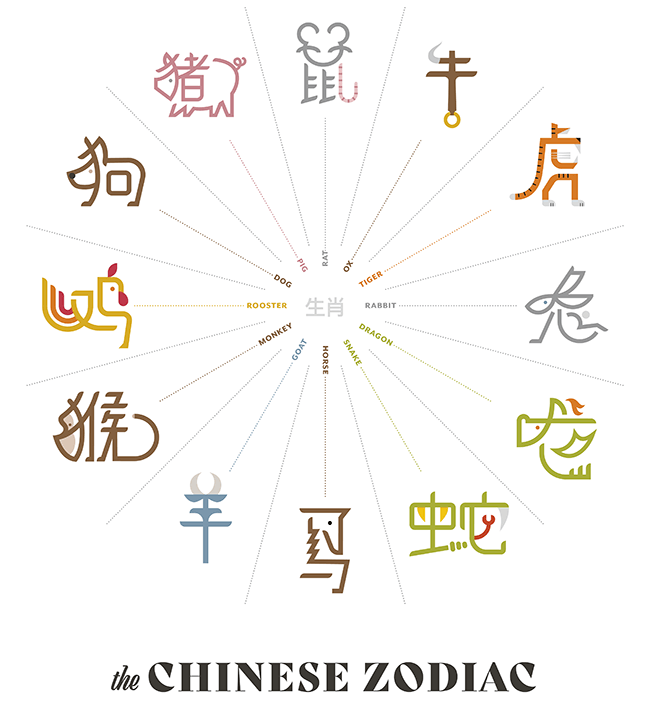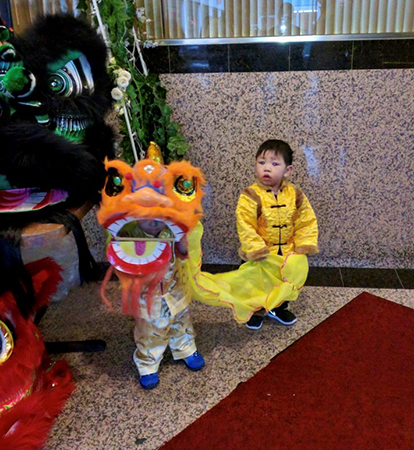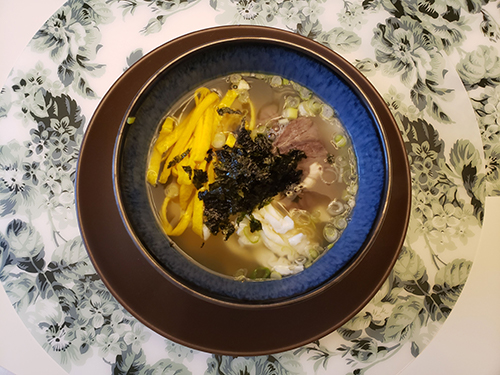
Chinese-American designer, Hope Meng, created and designed a Chinese New Year zodiac poster as part of her latest project, “Hanzimals.” Each zodiac emblem is brought to life in a playful, instructive way . The 2021 Lunar New Year ushers in the Year of the Ox. Twelve animals represent the Chinese zodiac signs.
Happy Lunar New Year! Lunar New Year, also called Spring Festival, marks the first new moon of the lunisolar calendars traditional to many East Asian countries, including China, South Korea, and Vietnam, which are regulated by the cycles of the moon and sun. Lunar New Year 2021 is on February 12, and in terms of the Chinese zodiac animal, it is the Year of the Ox. As we celebrate (whether safely in-person or virtually) with family and friends to welcome the Year of the Ox, we wanted to reflect on some of the accomplishments of our fellow researchers and colleagues at the National Institutes of Health (NIH) and learn how they celebrate the holiday with their loved ones. Below, three colleagues share what they have been working on this past year and how they celebrate the new year with their special traditions and customs.
Sharon Chang, Deputy Budget Officer at the National Institute of Mental Health (NIMH), assists with the planning and execution of the NIMH appropriations. During the COVID-19 pandemic, Chang had been focused on team morale and a successful closeout of the FY2020 budget and is currently working on the NIMH budget office’s conversion to QlikSense. Her family usually celebrates Chinese New Year by gathering for a large home-cooked meal. In keeping with family traditions, her father teaches her sons and nephews the art of the lion dance.

Tam Vo, Ph.D., pronouns he/him, is a second-year postdoctoral fellow at the National Cancer Institute (NCI). His research focuses on understanding the biophysical interactions between the HNRNPH1 protein and its target gene sites that regulate the oncoprotein EWS-FL1’s expression in Ewing’s sarcomas cells. Growing up in Vietnam, he enjoyed spending time with his family and relatives during Lunar New Year until his relocation to the US in 2010. His usual celebration for the past ten years in the US includes several attempts to replicate his mom’s Thit Kho Tau— a Vietnamese style pork roast with hard-boiled eggs— and FaceTime with his parents the first day of the New Year to wish them good health.

Dong-Yun Kim, Ph.D., is a mathematical statistician at National Heart, Lung, and Blood Institute (NHLBI). She has developed new continuous monitoring methods for the recruitment and event rates in clinical trials that can detect departure from planned rates during an early stage. Originally from South Korea, Dr. Kim and her family celebrate Seollal (Korean for Lunar New Year) by sharing traditional Korean dishes such as Tteokguk (Korean rice cake soup). She makes the soup with a beef bone base, with the egg yolk and egg white separated on the top– having this soup signals that you are one year older. Younger people also pay a visit to the elders in the family and bow formally, called Saebae. At that time, the elders give a blessing to the young people and give them a small amount of money as a token.

“We wish everyone a Happy New Year and that this year brings good health and happiness to you and your loved ones. 新年快乐 (pronounced as Xīnnián kuàilè in mandarin)!” says the Federal Asian Pacific American Council NIH-Chapter (FAPAC-NIH) President, Xinzhi Zhang, MD, Ph.D., FACE, FRSM. Dr. Zhang is a Program Director in the Division of Clinical Innovation, National Center for Advancing Translational Sciences, NIH.
Visit the NIH-Chapter of the Federal Asian Pacific American Council to learn more about the organization.
Do you have a story idea for us? Do you want to submit a guest blog? If it's about equity, diversity, or inclusion, please submit to edi.stories@nih.gov.
For news, updates, and videos, follow or subscribe to EDI on: Twitter, Instagram, Blog, YouTube.






